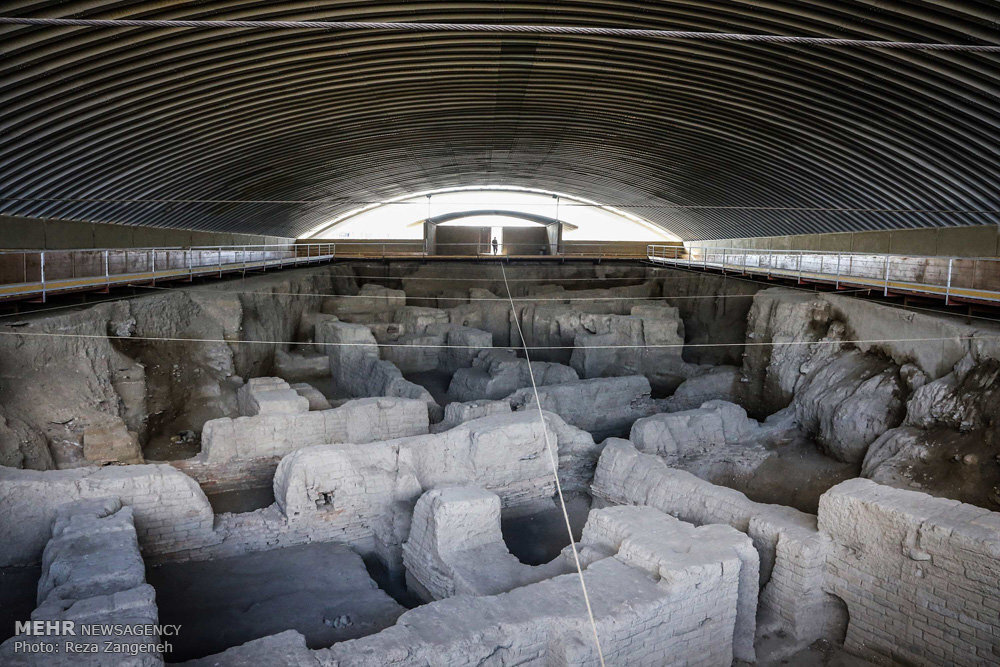Another archaeological season begins at Hegmataneh

TEHRAN – The 23rd round of archaeological season has recently commenced at the ancient Hegmataneh Hill in the west-central Iranian province of Hamedan, the director of the historical site has announced.
This round of excavation aims at exploring and preserving the remains of the towers and ramparts of the hill, Hassan Soltani said on Sunday.
The project also seeks to enhance long-term maintenance of the already discovered artifacts against potential damage, the official added.
Five Iranian archaeologists are conducting the excavation, which is expected to conclude within a month, he noted.
The Hegmataneh Hill, also called Tepe Hegmataneh (thought to correspond to the ancient citadel of Ecbatana), has a circumference of 1.4 kilometers with an area of about 40 hectares.
The ruined Hegmataneh (Ecbatana) which is partly beneath the modern city of Hamedan (the capital city), is widely believed to be once a mysterious capital of Medes. According to ancient Greek writers, the city was founded in about 678 BC by Deioces, who was the first king of the Medes.
French Assyriologist Charles Fossey (1869 – 1946) directed the first excavation in Tepe Hegmateneh for six months in 1913. Erich Friedrich Schmidt (1897 – 1964), who was a German and American-naturalized archaeologist, took some aerial photos from Hamedan between 1935 and 1937.
According to the Greek historian Xenophon of Athens (c.430-c.355), Ecbatana became the summer residence of the Achaemenid kings. Their palace is described by the Greek historian Polybius of Megalopolis. He writes that the city was richer and more beautiful than all other cities in the world; although it had no wall, the palace, built on an artificial terrace, according to Livius, a website on ancient history written and maintained since 1996 by the Dutch historian Jona Lendering.
An inscription, unearthed in 2000, indicates that Achaemenid king Artaxerxes II Mnemon (404-358) built a terrace with columns in Ecbatana. Some twelve kilometers southwest of Hamedan is Gandj Nameh, where Darius I and his son Xerxes had inscriptions cut into the rock.
Polybius, a Greek historian of the Hellenistic period noted for his work The Histories, tells that the builders used cedar and cypress wood, which was covered with silver and gold. The roof tiles, columns, and ceilings were plated with silver and gold. He adds that the palace was stripped of its precious metals in the invasion of the Macedonian king Alexander the Great and that the rest was seized during the reigns of Antigonus and Seleucus. Later, Ecbatana was one of the capitals of the Seleucid and the Parthian Empires, sometimes called Epiphaneia.
Ecbatana is deemed to be remaining a riddle, wrapped in a mystery, for decades or even centuries to come as the site of the ancient city lies partly within the modern city of Hamedan, which has never been excavated before.
Known in classical times as Ecbatana, Hamedan was one of the ancient world’s greatest cities. Pitifully little remains from antiquity, but significant parts of the city center are given over to excavations. Ecbatana was the capital of Media and subsequently a summer residence of the Achaemenian kings who ruled Persia from 553 to 330 BC.
Hamadan has had many names: it was possibly the Bit Daiukki of the Assyrians, Hangmatana, or Agbatana, to the Medes, and Ecbatana to the Greeks. One of the Median capitals, under Cyrus II (the Great; died 529 BC) and later Achaemenian rulers, it was the site of a royal summer palace.
About 1220 Hamedan was destroyed by the Mongols. In 1386 it was sacked by Timur (Tamerlane), a Turkic conqueror, and the inhabitants were massacred. It was partly restored in the 17th century and subsequently changed hands often between Iranian ruling houses and the Ottomans.
Sitting on a high plain, Hamedan is graciously cool in August but snow prone and freezing from December to March. In summer the air is often hazy.
Ali Sadr cave, Ganjnameh inscriptions, Avicenna Mausoleum, Hegmataneh hill, Alaviyan dome, Jameh mosque, and St. Stephanos Gregorian Church are amongst Hamedan’s attractions to name a few.
ABU/AFM
Leave a Comment